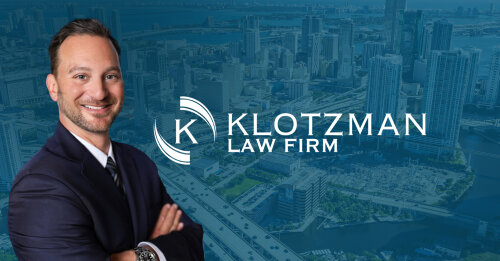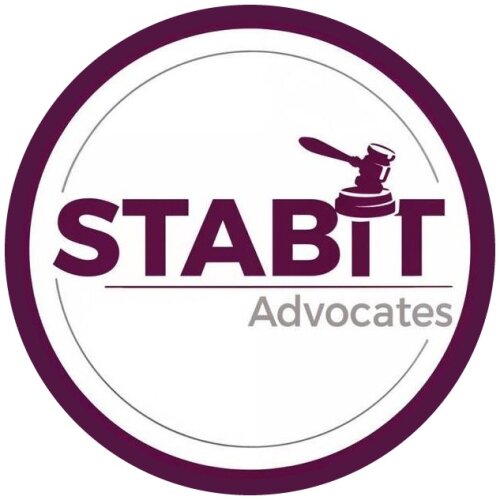Best Toxic Tort Lawyers in New York City
Share your needs with us, get contacted by law firms.
Free. Takes 2 min.
List of the best lawyers in New York City, United States
1. About Toxic Tort Law in New York City, United States
Toxic tort law in New York City covers civil claims arising from exposure to hazardous substances such as asbestos, lead paint, or industrial chemicals. Victims typically seek damages for medical costs, lost earnings, and pain and suffering. Cases often involve premises owners, employers, manufacturers, and contractors whose activities or products caused the exposure.
In New York, toxic tort claims are governed by state law, with local factors influencing how cases are investigated and litigated in NYC courts. Understanding the relevant statutes, regulations, and procedural rules helps residents assess whether pursuing a claim is appropriate. When in doubt, a qualified toxic tort solicitor or trial lawyer can evaluate exposure, causation, and damages specific to New York City.
Statutes of limitations for personal injury claims in New York are generally three years, with discovery rules applying in some toxic tort cases. Source: New York State Courts and NYC resources.
New York State Courts provide official guidance on filing deadlines and handling personal injury actions in the state, including toxic tort matters.
New York State Department of Health and New York City Department of Health and Mental Hygiene outline public health approaches to lead exposure and safety measures in homes and buildings, which frequently inform toxic tort claims in NYC.
2. Why You May Need a Lawyer
Scenario 1: Lead exposure in a Manhattan rental with pre-1978 paint
A child in a pre-war apartment develops elevated blood lead levels due to undisclosed lead hazards. The landlord failed to disclose known hazards or to address peeling paint. You would want a toxic tort attorney to evaluate disclosure obligations, potential abatement costs, and damages for medical care and emotional distress.
Scenario 2: Asbestos exposure during a Brooklyn brownstone renovation
A construction worker or resident inhaled asbestos fibers during a demolition project without proper containment. A lawyer can investigate whether the contractor complied with OSHA standards, the building owner’s duties, and potential liability for medical expenses and lost wages.
Scenario 3: Unsafe consumer products sold in NYC
A family experiences respiratory issues after using a cleaning product containing hazardous chemicals. A toxic tort solicitor could assess product liability against manufacturers or retailers and pursue compensation for healthcare costs and long-term effects.
Scenario 4: PFAS exposure linked to firefighting foams or industrial use
Exposure to PFAS in the NYC region can involve local firefighting training facilities or municipal sites. A skilled attorney can evaluate chemical exposure pathways, regulatory standards, and potential damages for health costs and ongoing monitoring.
Scenario 5: Environmental contamination near a facility in or around NYC
A home or business is damaged by soil or groundwater contamination from nearby industrial activity. An attorney can identify responsible polluters, investigate regulatory violations, and pursue damages for property loss and medical concerns.
3. Local Laws Overview
Lead related regulations and protections
Federal and local rules create disclosure and remediation duties for lead hazards in housing. The Residential Lead-Based Paint Hazard Reduction Act (Title X) requires landlords to disclose known lead paint hazards to tenants and to provide certain information about lead hazards in housing built before 1978. NYC and NYS agencies enforce and interpret these protections for residents of city buildings and rentals.
Recent federal updates continue to shape lead safety standards, including disposal and testing guidelines under 24 CFR Part 35, which influence NYC practice. For city and state specifics, DOHMH and NYSDOH publish practical guidance for landlords and tenants on remediation timelines and certification requirements.
Asbestos and occupational safety regulations
Asbestos exposure is regulated under federal OSHA standards and state level regulations. In NYC, builders, constructors, and employers must follow safe handling practices for asbestos-containing materials and implement appropriate containment and air monitoring. Violations can lead to fines and civil liability in toxic tort actions.
New York workers and property owners should be aware of applicable OSHA rules and NYS Labor Law provisions that govern construction safety and the duty to provide a safe workplace. You can reference federal guidance on asbestos handling and state level enforcement through NYS agencies.
Environmental and hazardous substances framework
New York Environmental Conservation Law and related regulations provide the general framework for governing hazardous substances and pollution. These laws establish standards for cleanups, reporting, and penalties for wrongful releases that can underlie toxic tort claims.
In addition, ongoing federal updates from the EPA shape how exposures are evaluated, particularly for water, soil, and air contaminants that may lead to civil claims in NYC.
Federal lead and environmental protections influence NYC practice, including housing disclosures and product safety standards. Source: U.S. EPA and U.S. HUD guidance.
U S Environmental Protection Agency - Lead
4. Frequently Asked Questions
What is a toxic tort claim in New York City?
A toxic tort claim arises when exposure to a hazardous substance causes harm to health or property. You typically sue for medical costs, lost wages, and pain and suffering. The case focuses on causation and the defendant's responsibility for exposure.
How do I start a toxic tort case in New York City?
Begin with a consultation with a qualified toxic tort solicitor. They will review exposure history, medical records, and potential defendants. If appropriate, you file a complaint in the appropriate NYC court within the statute of limitations.
What is the statute of limitations for toxic tort claims in NYC?
Most personal injury actions have a three-year period in New York. Some discovery rules may apply in latent injuries. Always confirm current rules with a local attorney or the New York Courts.
Do I need a lawyer for a toxic tort case in New York City?
Yes. Toxic tort cases involve complex causation, medical evidence, and regulatory issues. An experienced attorney helps gather evidence, identify all potentially liable parties, and negotiate settlements or pursue trials.
What kinds of damages can I recover in a toxic tort case?
Damages typically include medical expenses, future medical costs, lost wages, and compensation for pain and suffering. Some cases may also recover property losses or related expenses tied to exposure.
How long does a toxic tort case take in NYC?
Litigation timelines vary widely. Some cases settle within a year or two, while others proceed to trial over several years. Complex exposure and causation questions often extend the timeline.
Do I need to prove direct exposure or a specific product?
Yes. You must show a nexus between exposure and the harm, plus a link to a defendant's action or product. Medical testimony and expert reports are typically required.
Can I sue multiple parties in a NYC toxic tort case?
Yes. You can pursue claims against multiple responsible parties, including manufacturers, property owners, or contractors who contributed to the exposure. Your attorney coordinates the case strategy.
Should I accept a quick settlement in a toxic tort case?
Settlements can be beneficial to secure timely compensation, but they may limit future recovery. A lawyer reviews the offer to ensure it reflects current and future costs and damages.
Is a class action available for toxic torts in NYC?
Class actions are possible in some product liability or widespread exposure scenarios, but they are less common in personal injury claims. A lawyer can evaluate the best approach for your situation.
Do I need to keep medical records and incident notices?
Yes. Preserve all medical bills, diagnoses, tests, and any notices from health departments or landlords. Good documentation strengthens causation and damages in a toxic tort case.
Is there a difference between suing an individual and a company for toxin exposure?
Yes. defendants may include landlords, employers, manufacturers, contractors, or government entities. Each type of defendant may raise unique defenses and require different evidence.
5. Additional Resources
- New York State Department of Health (NYSDOH) - Lead Poisoning Prevention - State programs, guidance, and reporting requirements for lead hazards. health.ny.gov
- New York City Department of Health and Mental Hygiene (DOHMH) - Lead Poisoning - City level information on inspections, abatement, and safety notices in NYC. nyc.gov
- U S Environmental Protection Agency (EPA) - Lead - Federal guidance on lead hazards, standards, and remediation. epa.gov
6. Next Steps
- Document exposure and injuries: gather medical records, testing results, and any notices from landlords or employers within two weeks of discovery.
- Preserve evidence: keep copies of leases, work orders, product labels, and communications about hazards or containment failures.
- Consult a NYC toxic tort solicitor: seek an initial assessment within one month to understand viability and costs.
- Identify potential defendants: create a list including landlords, contractors, manufacturers, or facilities near your exposure site.
- Evaluate statutes of limitations: confirm the deadline to file suit in your location and case type with your attorney.
- Request medical expert opinions: obtain independent medical examinations and causation analysis for your exposure and injuries.
- Decide on settlement or litigation path: discuss the pros and cons of early settlements versus trial, including potential future costs and outcomes.
Lawzana helps you find the best lawyers and law firms in New York City through a curated and pre-screened list of qualified legal professionals. Our platform offers rankings and detailed profiles of attorneys and law firms, allowing you to compare based on practice areas, including Toxic Tort, experience, and client feedback.
Each profile includes a description of the firm's areas of practice, client reviews, team members and partners, year of establishment, spoken languages, office locations, contact information, social media presence, and any published articles or resources. Most firms on our platform speak English and are experienced in both local and international legal matters.
Get a quote from top-rated law firms in New York City, United States — quickly, securely, and without unnecessary hassle.
Disclaimer:
The information provided on this page is for general informational purposes only and does not constitute legal advice. While we strive to ensure the accuracy and relevance of the content, legal information may change over time, and interpretations of the law can vary. You should always consult with a qualified legal professional for advice specific to your situation.
We disclaim all liability for actions taken or not taken based on the content of this page. If you believe any information is incorrect or outdated, please contact us, and we will review and update it where appropriate.














